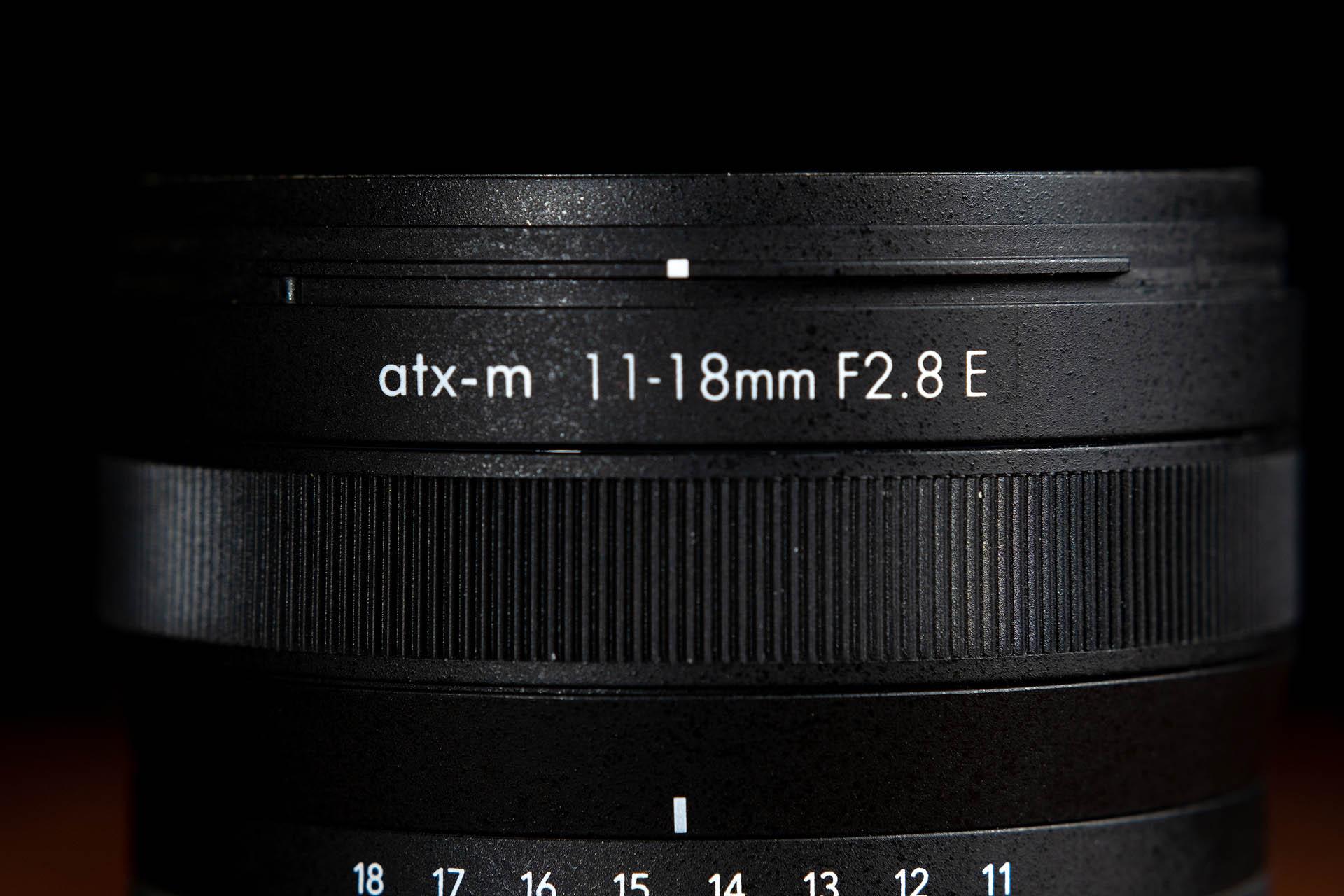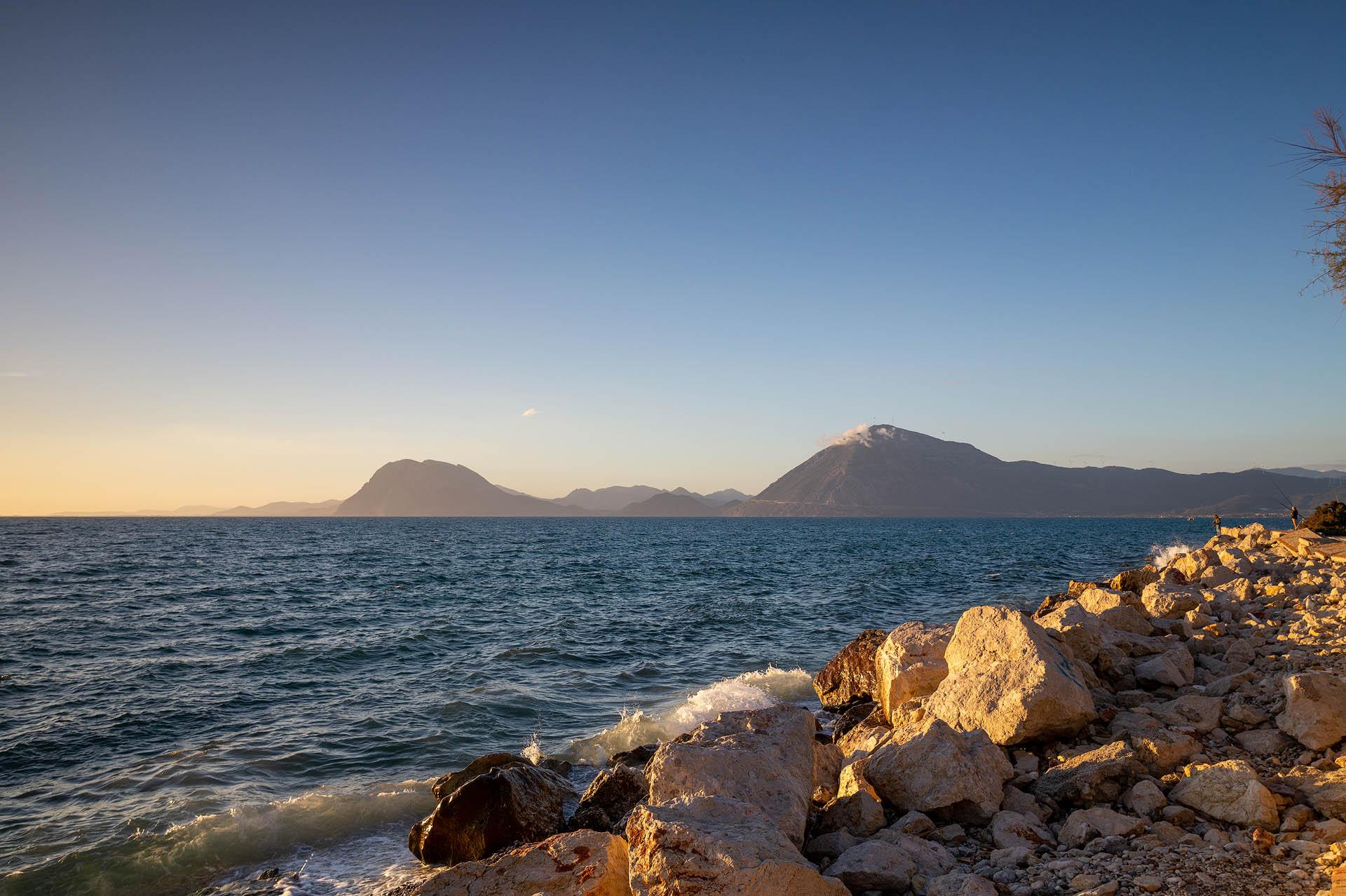Contents
- 1 Tokina 11-18mm F2.8 E Lens Review
- 1.1 Intro
- 1.2 Image Samples with Tokina atx-m 11-18mm F2.8 E lens
- 1.3 About the Focal Length Range of 11-18mm
- 1.4 A Note About APS-C Cameras
- 1.5 Build Quality, Lens Handling & Design
- 1.6 *Testing Notes*
- 1.7 *Disclaimer*
- 1.8 Optical Design
- 1.9 Autofocus
- 1.10 Optical Performance
- 1.11 Personal Thoughts
- 1.12 Conclusion
- 2 Pros
- 3 Average
- 4 Cons
Tokina 11-18mm F2.8 E Lens Review
All photos of this review were captured by Christophe Anagnostopoulos.
Graphs and MTF Charts provided from Tokina Global (www.tokinalens.com)
October 4, 2022 -> Full Review was published.
***Reading Time: 35 minutes***
Intro
One of the most legendary lenses that Tokina has ever released was the AT-X 116 PRO DX f2.8 (a.k.a. 11-16mm F2.8), a truly great ultra-wide angle lens for EF and F Mount DSLR cameras. That lens defined the market with its amazing optical performance, the bright F2.8 aperture that made astrophotography reachable (and affordable due to its low retail price) to everyone.
As technology keeps advancing and we are almost 100% on the mirrorless era, it was time for that lens to be reincarnated for mirrorless cameras.
In this review I will present you the new Tokina atx-m 11-18mm F2.8 E lens, the first Tokina zoom lens for mirrorless Sony E-Mount cameras, designed for both photography and videography.
Let’s take a closer look in the lens and check how it performed in various tests, both in lab and outdoors!
About the Focal Length Range of 11-18mm
The focal length range of 11-18mm on a Sony E-Mount (APS-C) camera is the equivalent of 16.5-27mm on a Full Frame sensor, which is one of the most common ranges for ultra-wide angle zoom lenses.
It is obvious that with this effective focal length range, these type of lenses are a great choice for landscape photography, but they are also known for their versatility in many other situations, like in example in weddings, in real estate/architectural photography and vlogging (& videography in general) to mention a few.
Speaking personally, in my commercial pro work, and to be more specific in real estate photography which is the main type of my yearly commercial work, my main workhorse lens is the Tokina opera 16-28mm F2.8 (you can read my review for this lens here), as it provides a useful focal range to work in a property, either the house is big or small.
Still, there are certain occasions (mostly in smaller properties) in which I found myself in need to use the same focal length range but in a more compact lens, so to put the camera (and the tripod) on a narrow angle inside a room to achieve a better framing.
The new Tokina 11-16mm F2.8 E lens provided this ability in my work due to its very compact form and size, and of course for the great optical quality that it offers.

A Note About APS-C Cameras
Just a couple of months ago, in my previous review of the Tokina SZ 33mm F1.2 X lens, I have written a “Note about APS-C Cameras”.
I will not re-post it here to save some space, but I suggest you to read at some time, it might be helpful in case you are thinking to change camera systems, or want to go back to APS-C from FX.
You can read it here.
Build Quality, Lens Handling & Design
The Tokina atx-m 11-18mm F2.8 E lens has a simple modern exterior design following all the Tokina guidelines and standards.
The lens features a high quality plastic housing with a subtle matte black finish, and it is made in Japan with high quality standards.
The build quality is very good and despite the plastic materials of the construction the lens feels solid and premium in hands.
None the less, I would be careful to avoid any light accidental hits just in case, as of course I always do with every lens (and camera gear in general).
Unfortunately, the lens is not weather sealed, but I tested it outside during a light rain and I didn’t had any issues.
Of course, as soon as I returned to my studio, I cleaned the lens to avoid any possible issues.
Size
As you have probably already seen from the first sample shots, the lens is very compact and the weight of the lens is only 335g (without caps and lens hood attached), while its dimensions are 74.4mm x 74.1mm for Sony E.
The lens sits well on almost all Sony E cameras, but please note that on my tiny Sony A5000 it might seem rather big!
Size comparison with Tokina atx-m 33mm F1.4 E and Tokina 16-28mm F2.8 (FX) lenses.
Mount
The mount is made of metal, and it doesn’t have any dust protective rubber ring.
I suppose a simple protective rubber ring won’t increase too much the overall manufacturing costs by adding to the lens, but of course I’m not familiar with this, so I’m just making a simple guess.
Still, the absence of a protective ring is something that I always note on nearly all the latest Tokina lenses, as I feel it is a very small detail that makes a great difference.
In the mount there are of course electronic contacts to provide full communication with the camera body, so all camera features like Autofocus, Electronic Aperture Change, EXIF Data, In-Camera Corrections and In-Body Image Stabilization* (IBIS) will work perfectly
(*in case the selected camera model has this feature)
Lastly, in the top of the mount, opposite to the electronic contacts, we find a micro USB port, that can be used for future firmware, something that ensures that the lens will work ideal with upcoming new camera models in the future.

Focus Ring
The focus ring has a good size (compared to the lens overall size), covering around 20% of the overall lens barrel, and it is located in the front part of the lens, under the lens model name.
It has a very good solid grip and it feels silky smooth when focusing, offering the proper level of resistance to the user.
The lens focusing system technology is “focus-by-wire” which means that the lens can only be focused when the camera is powered on.
Practically this means that there aren’t any hard stops at the minimum and maximum focusing distance.
While focus by wire is pretty much the industry standard these days and on 95% of possible shooting scenarios is perfect and ideal, it is still one of the things that personally annoys me, as for specific types of photography, like in example low light/astrophotography, it is frustrating to having to focus again if the camera is turned off, etc. But this is just a personal preference and it has nothing to do with the specific lens.
It is more a shout to the industry, to make some refinements to the system ????

Zoom Ring
The lens of course features a zoom ring, that is located in the bottom part of the lens, near the mount.
The zoom ring is slightly bigger from the focusing ring, and it has the same very good solid grip and smoothness when selecting the desired focal length.
The focal length distances markings are very clean and they are separated evenly, having a lot of room (around 0.5cm) between them, so it is so easy to select the ideal focal length for your shot.

Zooming in and out
The physical length of the lens changes slightly as the zoom ring is turned, and to be more specific, when the zoom ring is set to 11mm the lens extrudes by 1cm, while when set to 18mm it is retracted.


Lens Hood
The lens includes a screw-on type BH-674 Lens Hood which is made of plastic.
The difference compared to other Tokina models however is the feel of the hood, as the plastic material feels more rough in hands.
The lens hood can be stored to the lens if attached on reverse, and in general it makes a great job on protecting the front element from any possible scratches, as also to avoid capturing unwanted artifacts like for example flaring marks.

*Testing Notes*
All indoor tests took place in my photography studio in a controlled lighting environment.
Dedicated lighting scenarios were created depending the needs of each test.
The Lab Chart Test is “ISO 12233”.
The following cameras were used for this review:
1) Sony A5000
2) Nikon Z7ii (with Techart TZE-01 adapter)
Other Tools used:
i) Nitecore BlowerBaby – for cleaning the camera sensor before tests
ii) Slik VariCF-704 Tripod – for stable indoor and outdoor shots
iii) Kenko PRO1D+ Instant Action Close-Up Filters – for backstage shots
*Disclaimer*
I’m a Global Ambassador of Tokina since 2017, however this is not a paid post, and I’m only expressing my personal thoughts and experiences using the new Tokina atx-m 11-18mm F2.8 E lens.
Optical Design
The Tokina atx-m 11-18mm F2.8 E lens incorporates a complex optical design with a well balanced arrangement of two (2) aspherical and two (2) super low-dispersion (SD) glass elements to suppress chromatic aberrations, while providing rich color reproduction with minimal light fall-off and distortion.
All elements, including the front glass, are fully coated with Tokina’s original Super Low Reflection Multi-Coating formula, minimizing flaring and ghosting issues, having very good contrast levels across the frame, while also providing water, oil and dust repellent abilities on the front element.
Lastly, the lens features a rounded diaphragm of nine (9) blades and the angle of view is 104.3° degrees on 11mm and 76.7° at 18mm.
Technical Specifications
- Brand: Tokina
- Mount Type: Sony E
- Compatible Format(s): APS-C
- Focal Length: 11-18mm (equivalent in FX: 16.5-27mm)
- Maximum Aperture: f/2.8
- Minimum Aperture: f/22
- Angle of View (FX-format): 104 – 77°
- Elements: 13
- Groups: 11
- Diaphragm Blades: 9
- Coatings: Multi-Coated
- SD (low Dispersion) Glass Elements: 2
- Aspherical Glass Elements: 2
- Filter Size: 67mm
- Image Stabilization : N/A
- Autofocus: Yes, STM
- Focus Mode: Autofocus/Manual Focus
- Macro ratio: 1:9.2 (at 11mm) – 1:12.4 (at 18mm)
- Minimum Focus Distance: 19cm (at 11mm) – 30cm (at 18mm)
- Overall Length: 74.1-82.7mm
- Diameter: 74.4mm
- Weight (Approx.): 335 g
- Hood: Round Bayonet type BH-624 (included)
- Country of Origin: Japan
Autofocus
The autofocus performance of the Tokina 11-18mm F2.8 E lens is great, at the lens acquires focus instantly and accurately.
Although my Sony A5000 is a very old tech camera for 2022, still I enjoyed using this lens on a daily basis as the lens focus performance was exceptional.
The same applies in my Nikon Z7ii camera as well, as the autofocus performance was very fast and accurate, especially considering that the lens was adapted through Techart TZE-01 adapter!
Minimum Focusing Distance
The minimum focusing distance of this lens is only 19cm at 11mm focal length, which can create some very interesting framing opportunities along with the wide field of view.
When in “tele” mode, at 18mm, the minimum focusing distance is at 30 cm, which again can bring you very close to your subject.

Optical Performance
Sharpness (Lab Test)
Regarding sharpness performance, the Tokina atx-m 11-18mm F2.8 E lens has very good sharpness levels wide open at the center of the frame, and good levels towards the edges.
From F4 the sharpness levels in the center retains the same very good levels, while the levels at the edges of the frame are increasing becoming very good ias well.
After F14-16 the whole frame softens and the sharpness levels are decreasing due to diffraction.
For the following sharpness test, camera was on a Slik Vari-CF 704 tripod, and shutter was pressed with a 2 second timer to minimize any possible micro-movement.
Please note that all the test files below have not been edited or sharpened, they were just exported in jpeg in the original resolution from Lightroom.
Sharpness (Outdoors)
We already checked how the lens performed in the controlled environment of the lab, but as I have written many times in the past, no matter how good or bad the lab tests are, a lens only shows its real performance out in the field.
The lens is very sharp, providing excellent sharpness levels across the frame, delivering beautiful rendered shots.
Chromatic Aberration
Chromatic aberration, or fringing, are those purple and green color halos around areas of difficult (high) contrast transitions.
They usually appear around narrow dark regions that are over a bright background, like in example some tree branches over a sky background.
In the case of Tokina atx-m 11-18mm F2.8 E lens, Chromatic Aberrations are handled excellently, as I didn’t encounter any CA on my tests.
Bokeh
The nine (9) blade rounded diaphragm along with the wide aperture of F2.8 in theory can create some beautiful looking bokeh, but we have to keep in mind that this is an ultra-wide angle zoom lens, and not a standard prime lens for portraits.
While the bokeh is not always visible (depending on the shot), the transitions between the in and out of focus areas are rendered beautifully creating a delicate result.
Flaring
Thanks to Tokina’s original Multi Coating formula, any flaring issues are kept to a very good level with the atx-m 11-18mm F2.8 E lens, especially when shooting against very bright sources of light and/or in angles.
In scenarios with difficult and direct lighting, there are some small signs of green flaring which on almost all cases are easy to be removed or fixed in post processing.
Vignetting
The Tokina atx-m 11-18mm F2.8 E lens produces a slight amount of light fall-off towards the edges of the frame, when shooting wide open at F/2.8, and it can be easily fixed in post.
*Please note that at the time of writing this review, Adobe hadn’t released a Lens Profile for Camera Raw/Photoshop/Lightroom.


@11mm


@18mm
Comatic Aberration (Coma)
Coma is an optical aberration that afflicts off-axis light and it is caused by the curvature of the principal planes of the optical system, which becomes apparent when the light rays from the source enter the lens at an indirect angle causing the image to be off axis.
The result is a comatic spot in shape, having a bright central core with a triangular flare extending toward the optical axis of the lens.
The coma performance of the Tokina atx-m 11-18mm F2.8 E is acceptable, meaning that when wide open at F2.8 coma is visible in the edges of the frame, but it still looks better than other similar lenses.
Personal Thoughts
In my previous review I have mentioned how much would I love to see the reincarnation of the legendary 11-16mm for X Mount, and my wish became a reality but only in 50%, as the lens got released but for Sony E Mount cameras.
Well, now I wish this lens to become available in Fuji X Mount as well (Tokina can you hear me?????), as the lens delivers excellent results in all aspects and with its compact form make it a lens that must always be in your camera bag.
The lens is ideal for travel photographers, as it can be used not only for landscape shots, but also for street candids, and of course, is a great lens for real estate photographers.
I will definitely going to use it a lot in my upcoming property photo-shootings, as with its compact form, I can place the camera in narrower angles and still getting a beautiful framing even on tighter rooms.
Congrats Tokina for this great little lens!
Now I’m expecting even more for the possible future Tokina lenses!
Ratings
| Build Quality: |  (8.1 / 10) (8.1 / 10) |
| Handling: |  (8.9 / 10) (8.9 / 10) |
| Size and Weight: |  (9.4 / 10) (9.4 / 10) |
| Optical Performance: |  (8.2 / 10) (8.2 / 10) |
| Focus Speed and Accuracy: |  (8.5 / 10) (8.5 / 10) |
| Features: |  (6.9 / 10) (6.9 / 10) |
| Versatility: |  (8.8 / 10) (8.8 / 10) |
| Price Tag: |  (8.9 / 10) (8.9 / 10) |
| Average: |  (8.5 / 10) (8.5 / 10) |
Want to get notified when a new review is published?
Consider subscribing to my Newsletter!























































[…] Christoph Anagnostopoulos also reviewed the lens and concluded: […]
[…] Christoph Anagnostopoulos also reviewed the lens and concluded: […]